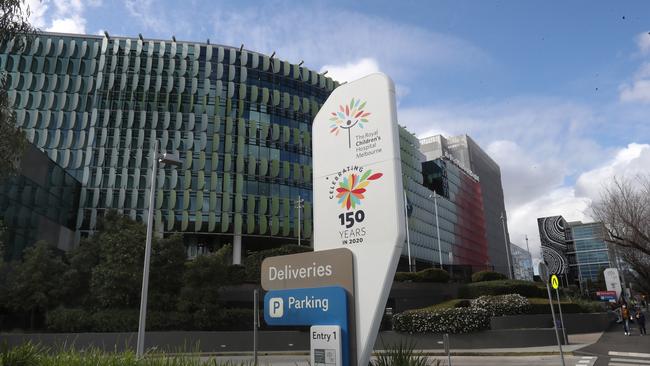Three year olds identifying as gender diverse
Three year olds are among the 350 gender diverse children to receive specialised care as the number of transgender and non-binary youth grows.

Victoria
Don't miss out on the headlines from Victoria. Followed categories will be added to My News.
Children as young as three are among the 350 transgender and gender diverse Victorians who have received treatment at the Royal Children’s Hospital in recent years.
A study of 359 patients from the hospital’s gender service from 2007 to 2016 show just over half were females who presented at an average age of 14. The others were males who came in at an average age of 12.
The findings come as an increased number of young people are identifying with a different gender than their biological or “assigned” gender.
One Australian study found 2.3 per cent of Australian students in years 10 to 12 identified as transgender or gender diverse.
The current study, led by Dr Michelle Tollit, found 29 per cent of patients over 10 years old received puberty blockers and 38 per cent of teens were given gender-affirming hormones. More than 90 per cent were transgender or non-binary.
Across the cohort, gender diversity was first evident at an average age of three.
Symptoms of gender dysmorphia were noted in boys with a median age of four and in girls with a median age of 11, according to the research published in the International Journal of Transgender Health.
Co-author Associate Professor Ken Pang from the Murdoch Children’s Research Institute said some concerned parents brought children in from the age of three.
“Children this young might be saying things like, ‘I’m not a boy, I’m a girl,’” he said.
“Their parents seek assistance in how to navigate this.
“The earlier we can help people, the more improved their later lives are likely to be.”
The study found half of the service’s young gender diverse and transgender patients had depressive disorders and 25 per cent had self-harmed.
The study cut off at 2016 when law changes made it easier for young people to access hormone treatment without going through the Family Court, Associate Professor Pang said.
He said there had been an increased clinical demand for such services in recent years due to greater awareness and easier access to treatment.
“In 2020 we had 450 referrals compared to around 300 in 2019,” he said.
Associate Professor Pang said there was an “increased awareness and understanding of gender diversity and more young people who know about the services available to them”.
“It’s not something people take lightly; it’s a very significant issue for young people,” he said.



